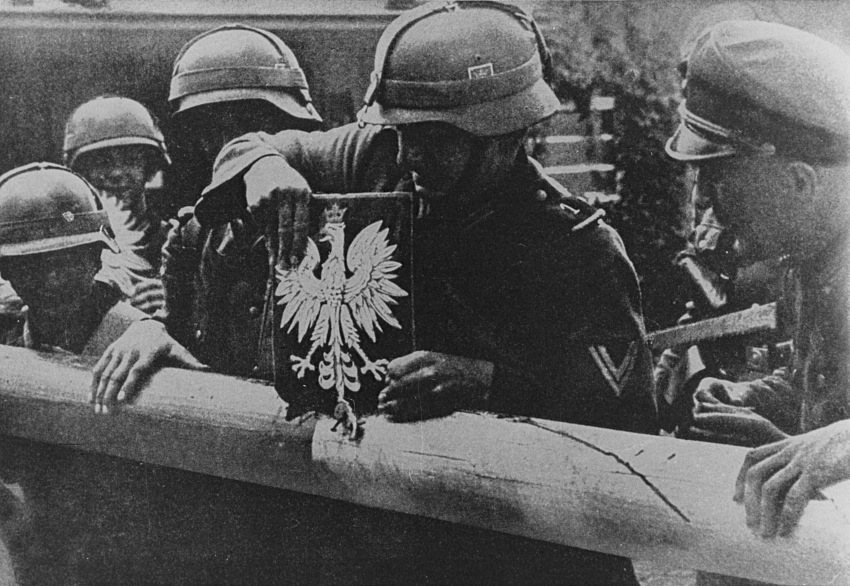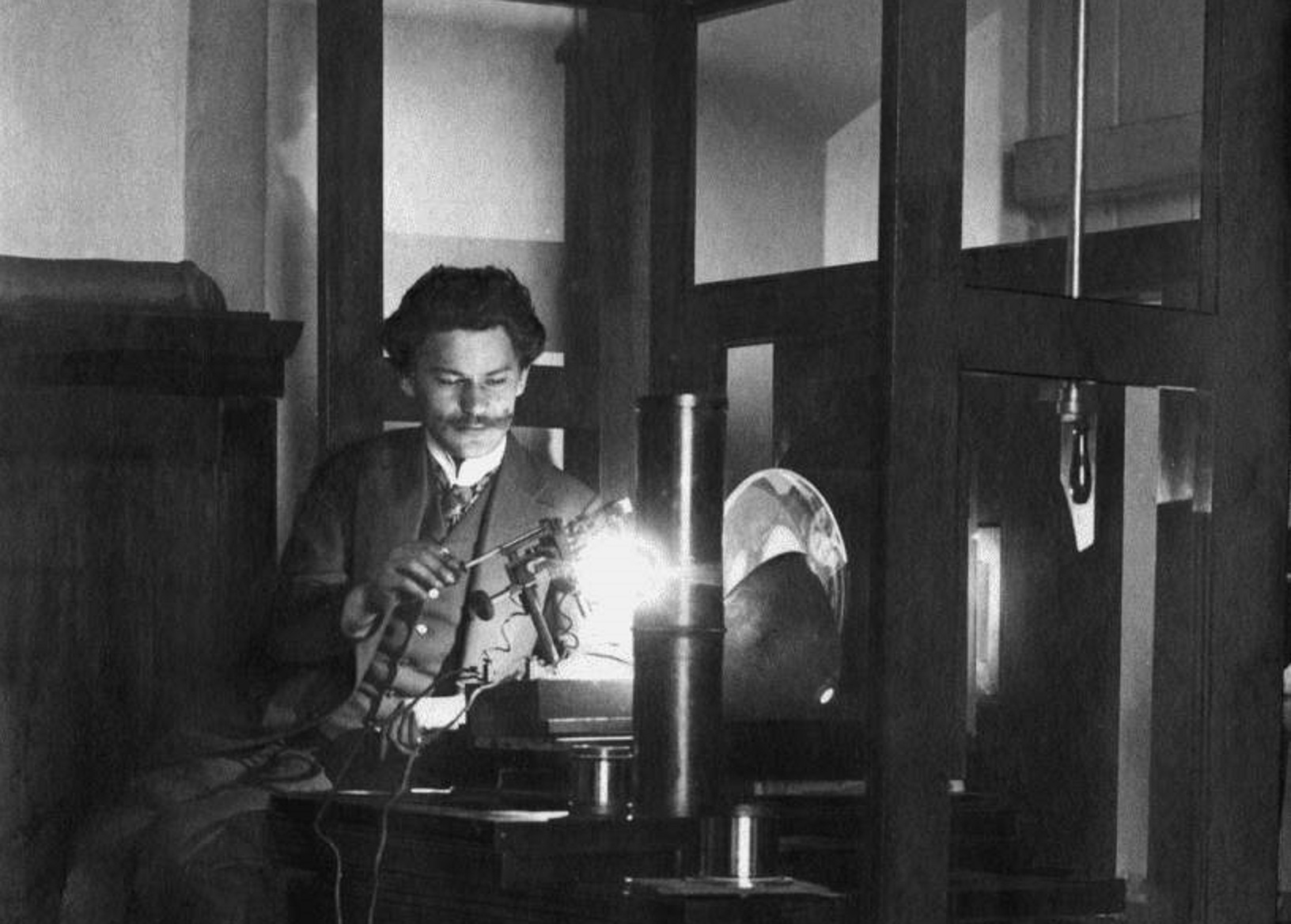Although more than seventy years have passed since the end of the Second World War, this topic is still very relevant. Today it comes up, for example, due to the report prepared by Polish authorities on the consequences of the conflict for Poland. What losses did Poland suffer as a result of the war and how are we still paying for them today? Sebastian Pawlina, a writer, journalist, and historian from the Museum of Polish History, reflects on this.
Polish History Museum: Every year, during the anniversary of the outbreak of the Second World War, one question comes back to us like a mantra – how much did the war cost Poland. Are we able to estimate it somehow?
Sebastian Pawlina: For years, researchers have tried to answer this question. According to calculations of Prof. Stanisław Ryszard Domański from 2018, as a result of the Second World War, Poland suffered losses valued at PLN 62 trillion. This amount takes into account both the damage that we can accurately measure and assess- such as costs relating to buildings, urban infrastructure, and works of art. It also encompasses matters that are more difficult to measure, taking into account Poland’s estimated rate of development if not for for the outbreak of the Second World War. Also, it is important to remember that when we think about losses from the war we mainly imagine destroyed buildings, cities and ruined streets – and this is undoubtedly an enormously significant loss category. However, this is still only part of the greater loss we experienced during the Second World War.
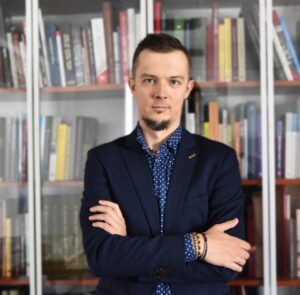
MHP: What are the others? What losses can we talk about?
Sebastian Pawlina: Perhaps the easiest to count is material losses – after the war, detailed research was conducted in order to determine the scale of the damages. And it was huge. It is enough to cite a few numbers – a loss of 64% in the metal industry, which lost 60% of its production capacity, a reduction of 61% in hard coal mining in 1946 compared with pre-war levels, damage to 70% of the railroad infrastructure. [These statistics] paint a devastating picture. In addition, there are extremely high levels of property damage. In Poznań and Białystok it reached 45% of [the cities], in Wrocław 65%, and in Gdańsk and in Szczecin – over 50%. What is more, 80% of Warsaw – the capital of Poland – was destroyed!
MHP: Was this a consequence of the Warsaw Uprising?
Sebastian Pawlina: In large part, yes, but not only. The process of destroying Warsaw was basically carried out in several stages. The first took place during September 1939 and the siege of Warsaw – even then you could see that Germany was determined to completely destroy the capital of Poland as it existed in 1939. They expected it to become a completely new city – a German one. That is why they deliberately bombarded landmarks with particular significance to Polish culture, and spared those with a German accent.
The next stage of the city’s destruction was the 1943 ghetto uprising. In its aftermath, the entire so-called northern district was literally razed to the ground, it was an empty expanse of rubble. Then came August and September 1944 and the devastating fights during the Warsaw Uprising. However, the greatest damage took place after the uprising’s finish. From October 1944, the Germans began a planned, deliberate, and ruthless destruction of the city. They burned down entire streets, demolishing important places and objects. In this way, they destroyed such [landmarks] as the Saski Palace and the Royal Castle, among many others. At that time, Poland lost many buildings and monuments of key importance to its history and culture.
But Warsaw and its monuments were not the only target of the occupiers. There was practically no place or object of importance to Polish culture that was not the target of looting or robbery by the Germans and the Soviets during the war. Whatever survived was stripped of its key collections of items that were of fundamental importance to culture. To this day, they remain scattered all over the world. Unfortunately, most of them could never be recovered.
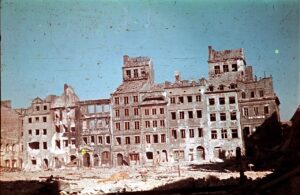
MHP: However, this is not the only loss in the sphere of culture – Poland has also lost many citizens, thanks to whom it could have continued to develop…
Sebastian Pawlina: Absolutely. It is estimated that about 30% of Poland’s doctors, 33% of its teachers, 28% of its priests and 26% of its lawyers died as a result of the war, and we could cite many more such numbers. Overall, among many professional groups, Poland lost more than a quarter of those individuals responsible for its development and the maintenance of its national awareness. However, you cannot put a price on human life. Poland’s total population loss is currently estimated at nearly 5.9 million dead, and these are only very rough estimates. It is impossible to determine the exact number of those murdered, mainly due to a lack of documentation.
Let us recall, for example, the executions in Palmiry. Although quite a lot is said about it today, we do not know exactly how many people were murdered there. 1700 bodies were excavated from mass graves after the war, but we are not sure of the actual total. In many cases, we also do not know the identities of the victims. By comparison, in France, well-preserved German documentation sometimes allows for an accurate estimation of the number of the murdered, as well as the determination of their names, occupations, and social position. Not only that, [there are documents] that also set out the exact time that they died, down to the minute. In Poland, a large part of the documentation has been destroyed, although some may remain in Russian archives. Consequently, Polish historians have no chance of reaching such precise findings as their French colleagues.
MHP: Since it is difficult to count all the Poles who died during the war, how can we estimate the number of those who survived but suffered serious injury?
Sebastian Pawlina: Unfortunately, this is one of the loss categories that cannot be measured. A significant part of Polish society that survived the terror of the occupation was seriously injured, fell ill, and took many years to recover. Their recovery cost Poland considerable sums that we are unable to calculate in any way. We can try to estimate the size of the damage caused by the actions taking place between 1939-1945. Poles, however, have continued to feel the consequences of the Second World War throughout the following decades.
MHP: What are the consequences?
Sebastian Pawlina: It is important to mention an aspect that, in my opinion, is completely ignored by historians, especially in such calculations. It is about post-traumatic stress disorder and its consequences. As a result of the war, many Poles suffered serious damage to their mental health, which contributed to somatic diseases. This meant that the Polish state had to allocate large funds to the treatment of these people, in order to heal the wounds that they had suffered during the Second World War. In a sense, we also feel them today.
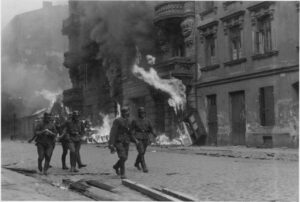
MHP: How?
Sebastian Pawlina: In 2008, a team led by Professor Maja Lis-Turlejska conducted interesting research showing the proportion of Poles who remembered the Second World War and who were still suffering from post-traumatic stress disorder. It turned out to be about 30%! When we talk about Poles with Jewish roots, this number rises to over 50%. By comparison, the proportion in Europe is below 10%. This means that at least one third of the Polish society that remembers the war still suffers from various traumas related to it. But this is not the end. Current research on epigenetics proves that traumas can be transmitted not only culturally but also genetically. This means that many of us, often even unconsciously, are suffering from trauma associated with the Second World War, even though we did not experience it first hand.
MHP: We are all, however, watching and empathizing with the war in Ukraine which is taking place right nearby, beyond our eastern border. Do these subconscious traumas associated with the Second World War affect how we perceive the aggression of our recent invader against Ukraine?
Sebastian Pawlina: Definitely yes. According to some psychologists and sociologists, the trauma experienced by one generation does not disappear until after the next three generations – provided that they live in a peaceful world devoid of shocks and dangers. For us, this time did not really come until 1989, when we fully regained our freedom. Then we enjoyed a few years of relative quiet but less than two generations passed. Then suddenly it was 2020 and the pandemic radically changed our reality. Two years later, a war broke out just beyond our eastern border – and it was started by our recent invader and occupier.
The outbreak of the war in Ukraine has caused us to recall images that we subconsciously carry within us all the time. Anyway, you do not need to look at Ukraine, we are still living in the Second World War in a way. When 1 September, 1 August, 8 May come the media reminds us every year of these anniversaries. New films and books are released. and we participate in commemorating them. Of course, we should not stop this. Keeping these days in mind is extremely important. There is no doubt, however, that these images have a very strong influence on our psyche. All this means is that we are actually bearing the costs of the Second World War to this day.
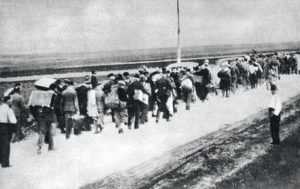
MHP: After the end of the war, were there any attempts to estimate the losses suffered by Poland?
Sebastian Pawlina: It was even being carried out during the war. In November 1939, the Revindication and Compensation Commission, specializing in compensation and recovery, was established in the underground, headed by Antoni Olszewski, who had been the Minister of Industry and trade in the first years of the Second Republic of Poland . The first report on the war losses of Poland was prepared by the Commission in March 1940. In mid-1941, this Commission was incorporated into the structure of the Delegation of the Government of the Republic of Poland as the War Liquidation Department, which in December 1942 became the War Effects Liquidation Department. One of its tasks was to calculate the losses suffered by Poland. In 1944, an attempt was made to state the total losses that the country had suffered up until then. At that time, the Ministry of Congress Work of the Government of the Republic of Poland in London reported that the German occupation had cost the lives of 4,140,000 Poles, including 2,841,000 Jews.
However, the first post-war estimates only appeared in 1947. The War Compensation Office, established two years earlier, then published a report on the losses suffered by Poland from 1939 to 1945. The size of the war losses was then estimated at 6,028,000. The problem is, however, that it was included in the report on a political order. The authorities had ordered that the number should be over 6 million, and that’s what happened.
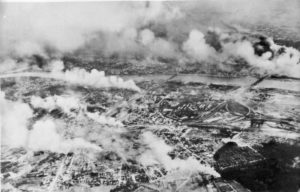
Another factor that undermined the credibility of these calculations was the fact that they only included Poles or Poles of Jewish origin. All other national minorities were thus completely left out. Moreover, the figure of 6 million concerned losses incurred by Poland only as a result of the German occupation. In the communist reality, it was completely understandable, but today we must remember that when we talk about the losses suffered by Poland during the war, we should take into account both occupations. Although the Soviet Union had a slightly different character than the German one, it also caused enormous damage.
MHP: What was this difference? What was the difference between the approach of the Germans and the Soviets to the occupation and destruction of Poland?
Sebastian Pawlina: Both the Germans and the Soviets aimed at the deliberate destruction of our country. However, they differed in their motives for action. It was clear to the Germans from the very beginning that Poland as a nation should cease to exist. According to the assumptions of the General Eastern Plan, Poles were to be murdered, and, those who managed to survive were to be transported far to the east. In this respect, the statement by Hans Frank in March 1941 is very telling: “The Führer promised me that the General Government would soon be completely free of Jews. In addition, a clear decision was made that the General Government was to become a German zone in the future. Where more than 12 million Poles live today, between 4 and 5 million Germans will someday live. The General Government is to be a country as German as the Rhineland.”
It is true that with time this approach began to change a bit – especially around 1943 when the Germans began to lose ground. Nevertheless, Frank’s statement in 1941 shows most eloquently the real intentions of the Germans. From the very beginning, they wanted to destroy Poland and they did so according to their schedule, covering up their tracks from the very beginning.

MHP: And the Soviets?
Sebastian Pawlina: The Soviets also aimed at the destruction of the Polish nation, but in their case the plan of destruction was treated not so much in terms of nationality or race as class. For Russians, activities in Poland during the war, as well as after its end, were an element of the class struggle. Those accepted by the authorities were to survive, and those who were not accepted, i.e. the gentry and the intelligentsia – would disappear. Ultimately, it would also lead to the destruction of the Polish nation. The intelligentsia plays an extremely important role in maintaining national awareness. Both occupiers realized this and did everything to destroy it.
MHP: Despite everything, the topic of the Soviet occupation is rather marginalized today, it remains overshadowed by the damage inflicted on us by the Germans. It would seem that after years of communist enslavement it should be the other way around. Why is this happening?
Sebastian Pawlina: I think there are several reasons. The most important thing is that Polish-German relations are much better than Polish-Russian relations. We managed to establish a dialogue with Germany much faster. Of course, these are very difficult topics, they give rise to a lot of emotions, and often controversy – but there is space to talk about it. Unfortunately, this is not the case with Russia.
This is perfectly demonstrated by the example of Katyn. What a gigantic effort Polish diplomats and historians undertook for Russia to confess to committing this crime after several decades! At this level, too, contradictory signals from the Russian authorities appear. There is no way to talk about any reparations or damages from Russia. It is fundementally unrealistic. The only thing left for us to do here is to limit ourselves to the historical and political sphere – to name all the fallen by their names, honor their memory and prevent them from ever being forgotten.
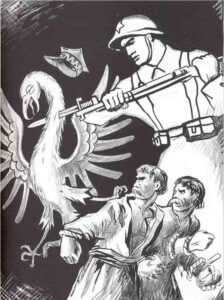
MHP: In recent years, more and more countries have raised the issue of war reparations and compensation – a few years ago the Greek government demanded compensation from Germany for the murder of civilians and looting during the Second World War, the Italian Constitutional Court granted citizens the right to seek compensation from Germany for crimes, and recently Lithuania also prepared a report on the war losses inflicted by Russia. Do these activities have any chance of success after so many years? Is it worth coming back to this topic again and again?
Sebastian Pawlina: It’s definitely worth it. On the one hand, as Poles, we have the right, and we should know what costs we had to bear as a nation during the Second World War. On the other hand, international relations require it. If we want to build a common future based on honesty and justice, we should talk as partners even when it comes to these difficult topics. Because this is not just a problem of the losses that we bore during the hostilities. We are talking about the deliberate and planned destruction of the country, an attempt to exterminate our nation. One has to call a spade a spade and speak it out loud. This is the basis for building honest partnerships.
But not only that – it is also a form of respect for the victims of the Second World War. As the poet Zbigniew Herbert appealed: “therefore we have to know / to count exactly / call by the first name / provide for a journey” (trans. John and Bogdana Carpenter). We must restore their name to all those who died in the fight against totalitarianism and commemorate them with dignity. Historical truth requires it.
Interviewer: Natalia Pochroń
Translation: Alicja Rose & Jessica Sirotin

